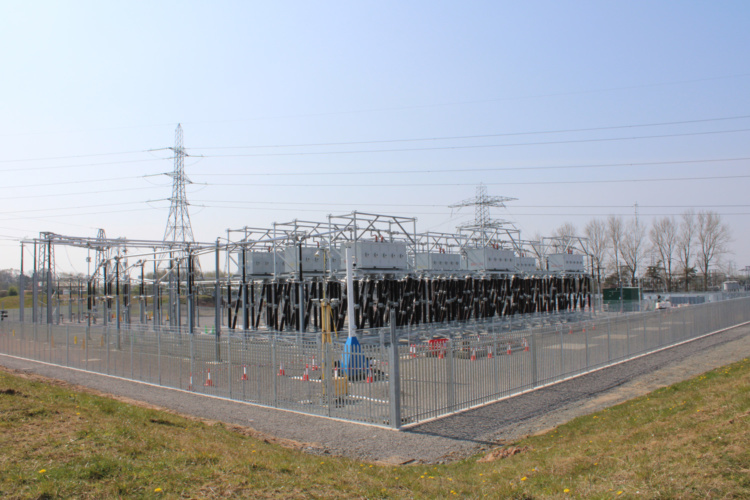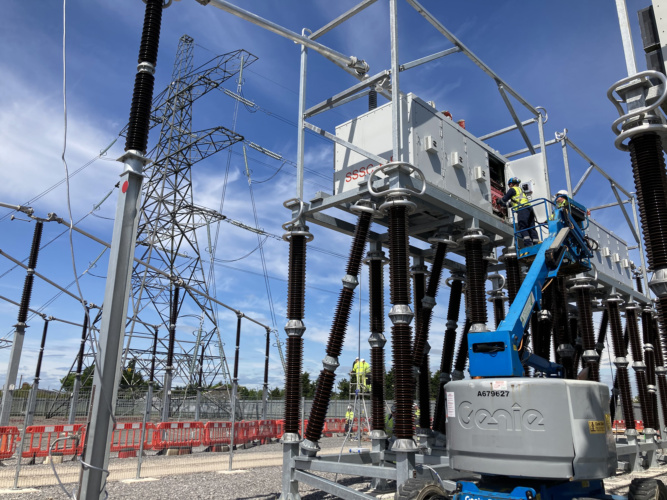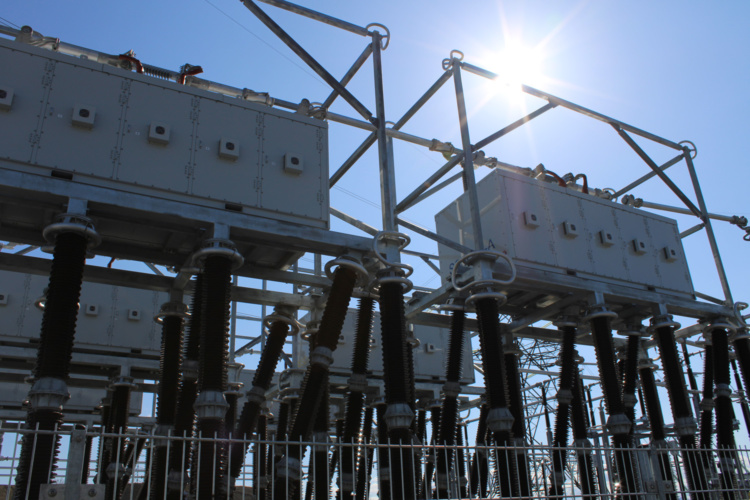1.5GW of capacity and save £380m. Andrew Wade reports.
Like most power networks around the world, the UK’s electricity grid was not built with renewables in mind. As large, centralised thermal generation from fossil fuels and legacy nuclear plants is phased out, increasing amounts of distributed and intermittent renewables are coming online, posing challenges for transmission across the grid.
C2I 2021
Category: Energy & Environment
Winner: Working smarter to get to net zero
Partners: National Grid Electricity Transmission with Smart Wires and Omexom
Category Sponsor: BAE Systems
Major changes will undoubtedly be required over the coming years to fully adapt the network to these challenges, but solutions are already in place that are helping to alleviate bottlenecks and free up huge amounts of capacity on the existing network. The winning entry in our Energy & Environment category is one such solution.

Led by National Grid Electricity Transmission (NGET), ‘Working smarter to get to net zero’ has seen the rollout of the world’s first large-scale use of a modular power flow solution based on SSSC (Static synchronous series compensator) technology. The project saw the installation of Smart Wires’ SmartValve technology across five circuits at three National Grid substation sites in the north of England in 2021, releasing a total of 1.5GW extra capacity - enough to power one million homes in the UK. But the project’s roots go back several years, to when the potential bottlenecks in the grid were first identified.
“NGET and Smart Wires collaborated on an NIA (Network Innovation Allowance) innovation project in 2017 to evaluate the potential of modular power flow control technology to be adopted on the GB transmission network,” explained Zac Richardson, director of New Infrastructure at NGET. “Following the NIA, power flow control devices were identified through internal studies as a solution for multiple projects aimed at resolving the bottlenecks.”

SmartValve is a power electronics device that intelligently reroutes power to lines with spare capacity, pulling electricity from overstretched lines onto underutilised ones and optimising the grid in the process. So far, a total of 48 SmartValves have been installed across five circuits at three National Grid substations in the UK, near Harker, Penwortham and Saltholme. NGET identified these substations as critical junctions for the transmission of power as ever more renewable energy generated in northerly parts of the country is transmitted south to more densely populated regions.
“The modular nature of the technology means that SmartValve deployments can vary in terms of layout and footprint, depending on the specific needs of the network where it is located,” said Richardson. “These deployments typically have a smaller footprint than alternative power flow control technologies, and the deployment design can be adapted to fit the available space at the site.
“For example, double stacking the SmartValves to reduce the overall footprint or using a non-conventional layout to fit in a uniquely shaped space. SmartValves can be easily added to existing deployments and installed devices can be moved between sites depending on the capability required on a circuit at any point in time.”
This modular nature helped the team during the rollout of the project when it was announced that a major Merseyside power plant would be closing, impacting local circuits where SmartValves were deployed. NGET was able to shift equipment between two different circuits at Penwortham, solving the problem with existing equipment and maintaining optimal power flow at that particular point on the grid.
“Modular solutions such as SmartValve enable NGET to adapt the solution as the network needs change over time, scaling up or down the deployment or relocating it to another area of the network,” said Richardson.
“The SmartValve installations at Penwortham were initially designed to account for power flows in the Mersey region with the power station generating. Under those conditions, the circuits from Penwortham into the region were unequally loaded, leading to different capacity SmartValves on the two circuits. Closure of the power station means the circuit loadings are now equal and so the SmartValve installations will be modified to account for this change.”
The need and ability to redeploy the technology also helped foster deeper collaboration between the project partners, who adapted on the fly when changes were required. SmartWires had been working with NGET from early in the project’s lifecycle, supporting the detailed technical studies as well as analysing the impact of using power flow control technology at scale on the transmission system.

Since installation, the devices have been controlled by National Grid ESO using a SCADA (Supervisory Control and Data Acquisition) system, allowing the SmartValves at each substation to be managed from its Berkshire control centre. According to Richardson, the SmartValve system is programmed to act autonomously based on local conditions on the surrounding network.
“The SmartValve is designed to ensure the control room operator always has the ability to adjust the operation to meet the system conditions in real time,” he said. “This can be done through a combination of pre-programmed current management set points and through instruction based on the wider network. It was designed like this to fit within existing planning processes with the ability to adapt and increase overall automation tools as the control room adapts and changes to the environment.”
As well as freeing up 1.5GW capacity, the project has also delivered an estimated cost saving of £380m. This has been due to a reduction in the constraint costs that arise when generation has to be curtailed in order to remain within the limits of the grid.
“When the system has bottlenecks due to limited network capability, the system operator needs to constrain generation so that flows are within the capability of the network,” Richardson explained. “The £380m reflects the reduction in constraint costs for consumers due to the additional network capacity provided by the SmartValve installations.”
Given these successes, it’s no surprise that NGET has further installations in the works, with additional SmartValve devices set to come online across the grid in 2022.
Category Sponsor
We are committed to using our world-class technologies to reduce the environmental impact of its activities. In 2021 we announced an ambitious target of achieving net zero greenhouse gas emissions across all our operations by 2030, and we are working towards a net zero value chain by 2050. We have has also joined the United Nation’s “Race to Zero” campaign, an initiative that seeks to build participation in the move to a decarbonised economy. We’re delighted to be recognising the best innovations in this field by sponsoring the Energy and Environment category in The Engineer’s ‘Collaborate to Innovate’ Awards.











Deep Heat: The new technologies taking geothermal energy to the next level
No. Not in the UK. The one location in the UK, with the prospect of delivering heat at around 150°C and a thermal-to-electrical efficiency of 10-12%,...